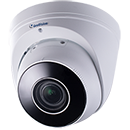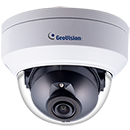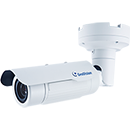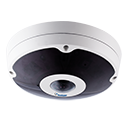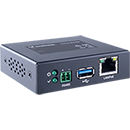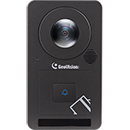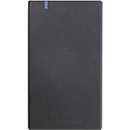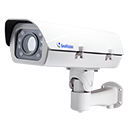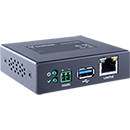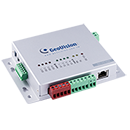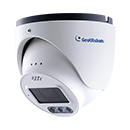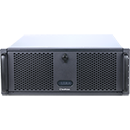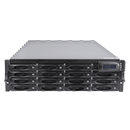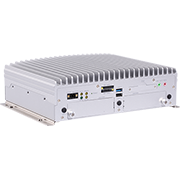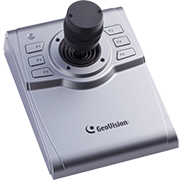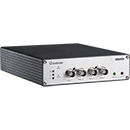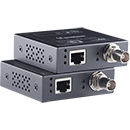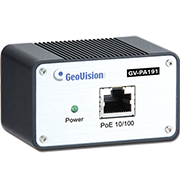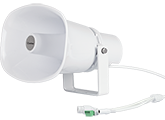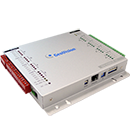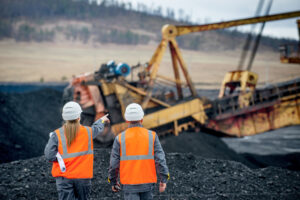
Mining supports the very foundations of a country, as economies can depend on the vital resources unearthed. While the mining industry contributes greatly to worldwide economy, it faces threats requiring comprehensive security and safety solutions. A&S looks at the potential threats, solutions and future trends in mining security.
The world’s mining output will grow 3.9 percent each year to 38.9 billion metric tons by 2011.China’s output alone for aluminum products has tripled in the past five years, reaching 12.4 million tons. The fastest growth is expected in developing regions, notably China, Southeast Asia, Latin America and Africa. Australia, the third largest producer of gold globally, will grow due to strong demand from China and India.
Worldwide demand for precious metals and copper benefits the African mining industry. South Africa’s economy thrives on mining. It is the biggest producer of platinum and one of the largest suppliers of gold in the world. It also produces coal and diamonds.
High-value minerals require security and worker safety, since mines are harsh environments. South Africa boasts some of the deepest mines in the world. Some gold mines reach deeper than 3,000 meters, with speculation of digging below 5,000 meters, which means that safety is a huge and expensive issue.
1. THREATS AND SOLUTIONS
Some of the biggest security issues for mines are perimeter intrusion, illegal mining and theft. Securing equipment and ensuring employee safety are also important concerns.
Dust, humidity, fog, low light, extreme temperature and weather conditions are issues at mines. Compared to commercial-use security systems, mining security systems must work in harsh environments.
Cabling technique is different for mines, since drilling or attaching cables to rock can only be done by engineering personnel. Pre-installed infrastructure cabling provides power and communications for conveyor systems or vehicle workshops to most underground points.
Since high level security is required, solutions must be tailored to each mine. Open-pit mines based on authority and risk levels put emphasis on access control, while underground mines — with a higher requirement for safety — put emphasis on people location management. For volatile environments such as gas and oil refineries, IS rated equipment would be required. Offshore mines focus on meeting and maintaining safety standards.
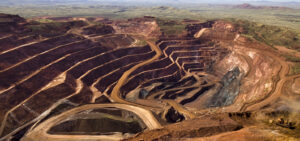
1.1. Intrusion
While priority areas depend on the site, a mine’s security profile is generally developed from the outside in, making perimeter security the first concern. However, although perimeter fencing is important, it is often impractical due to the large and difficult landscape of mine sites.
Video surveillance can detect perimeter intrusion. Day and night cameras are suited for open areas with good light over long distances. Infrared cameras can perform close range monitoring at low light entry and exit points. For dark outdoor areas, thermal imaging cameras can see intruders. Thermal green cameras are robust with explosion-proof housings, which can be used for oil rigs, offshore, liquid nitrous gas plants and ocean liners.
Video analytics generate alarms and execute commands by analyzing and detecting security breaches. A real-time video management solution capable of integrating with other mining security systems and pinpointing potential risks for operators is crucial. Integration between access control and video analytics manage the access of drivers and vehicles.
1.2. Illegal Mining
Devastating problems for mines in Africa include pirate miners and illegal mining activity. Armed pirate miners slip down mines unnoticed, blast and live underground. They commonly use mercury to extract gold, risking mercury poisoning and damaging the mine infrastructure.
Security systems can minimize the amount of illegal mining, but cannot prevent it. Tighter control through integrated security can minimize the risk of illegal mining.
1.3. Mineral Theft

Up to 30 percent of the gold that is mined in South Africa is stolen before it can generate profit for the mining houses.
To prevent theft, most attention is focused on access control and intrusion detection for storage, processing areas and areas where heavy machinery is present. Access control, with biometrics, turnstiles, metal detectors, time and attendance management and background checks, are used to minimize theft.
Starting a day’s work, miners first go through a mining lift, change into work clothes and gear in an underground changing room and are transported to their mining tunnels. Access control, biometrics and video surveillance are installed along the way.
Biometrics ensure only qualified individuals are allowed on site for labor intensive areas, as card-based solutions without biometrics could be fraudulent. Fingerprint, retinal and palm vein scanning are popular recognition methods used at mines.
Turnstile solutions are often integrated with biometric, video and time-and-attendance management. Since turnstiles only allow one person through at a time, no other unauthorized person can go past the access point. For additional security, portable trace detection scans of everyone entering or exiting the mine ensure no resources are taken away unlawfully.
Tracking workers and assets in different tunnels underground ensures security and safety. However, passive tags or swipe cards used above ground are not practical to use in underground environments, as they cause interruptions to movement through the mine and loss of productivity. An integrated tracking system that utilizes the data from both passive and active tagging systems is required to bridge the aboveground and underground systems.
Integrated solutions can monitor threats on the surface through fingerprint or retinal biometrics and intelligent perimeter detection, while video and guard monitoring can be used above and below ground. Business operation efficiency can improve with integrated security solutions.
1.4. Equipment Security
Effective mining security helps operators address and manage issues related to productivity and equipment operation. With cameras and other detection devices set up throughout the mine, operators can monitor different equipment and areas of the production process. Some mine vehicles are worth millions of dollars and are costly for downtime and repairs, so monitoring and securing equipment is important. Asset tagging is one example where two systems can work together. Tracking and tagging systems for mines must be rugged and reliable. If they are deployed in coal mines, they must be certified for methane environments.
Other than asset tagging, sensor solutions such as onboard vehicle collision alert technology protect property. The collision alert system detects hazards in the vehicle’s path and alerts drivers for potential collisions, preventing damage to the vehicle and protecting worker safety. Solutions like these provide invaluable production data feedback in difficult to reach areas.
1.5. Employee Safety
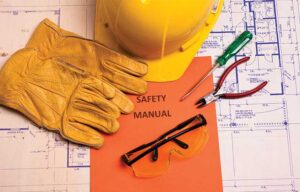
Employee safety is a concern for harsh working environments in mines. For mines that extract commodities like coal, nickel and potash, the primary security objectives aim for safety and productivity. Access control, surveillance, sensors and RFID with management software and regulations ensure worker safety.
Verifying authorized personnel is the first step to secure worker safety. Access control at mines should only admit personnel who passed safety inductions, medical checks and training. Added features include license renewal and expiry notifications.
In addition to controlling access, monitoring the work zone is essential for protecting employees. The use of video surveillance underground helps to monitor miner safety by viewing rock falls or accidents in real time, speed up search and rescue time and help inhibit the activity of pirate miners.
Video surveillance detects for hazardous materials as well. For large areas, radar integrated with video detects if a worker is in a hazardous area or is near hazardous materials or gases. It secures transport and storage of ammonia nitrate, explosives and other hazardous materials.
For areas that radar video surveillance cannot reach, wearable wireless gas detectors are an option. “E-nose,” a sensor that changes physical properties when it interacts with certain chemicals, can also monitor the release of methane and other hazardous materials.
Should an accident occur, the operational health and safety (OH&S) solution must track miners by access control, sensors and RFID systems. The solution should generate “muster reports” quickly, providing the exact number of individuals in an area to the control room personnel at any given time.
Biometrics is used at South African mines to record the number of people entering and exiting a specific shaft and zone, so operators know when is safe to blast in specific areas. An underground communication system further improves miner safety.
1.6. Employee Health
Other than safety issues related to security and mining operations, employee health conditions may affect work performance and increase accidents. Looking after staff health can result in a safe and efficient mining operation.
Access control can integrate fatigue management and blood testing for lead in mines with high exposure. The workers could also be denied access by a set date, with instructions to go to the medical facility for blood testing.
Biometrics can maintain employee payrolls, health, safety and legal compliance. Some biometric readers installed at dining halls record the level of nutrition received by each worker, ensuring them a healthy diet to be fit for work.
2. REGULATIONS
Security and safety are integral parts of any business. Management is increasingly aware of the cost related to worker safety failures, loss of lives and loss of material and equipment. Other than passing government regulations, increasing the level of security and safety could save money, increase productivity, reduce losses in infrastructure and cut production downtime.
Complying with government regulations not only exempts users from heavy fines and prison sentences, it prevents the significant costs associated with mining accidents. Explosive storage facilities should be in compliance with Security Sensitive Ammonium Nitrate (SSAN) rules. OHS, EHS, HSE and OHSE are worldwide organizations that set rules and policies for employee and public safety in mines.
The South African Mines and Safety Act of 1996 places heavy fines and sentences on poor safety regulations in mines, with hefty fines threatening profits, making it a top concern for local mines.
3. CHALLENGES

Mining security faces three challenges from harsh conditions, large areas and high costs for installing comprehensive solutions. At the depths of South African mines, the temperatures could reach in excess of 45 degrees Celsius and the environment is constantly moist and humid, which limits the technology that can be used.
Operators need sealed, waterproof units with vibration dampers, which can function over a wide temperature range. All cables need to be secured in airtight or waterproof material, preventing dust and other particles from damaging them. Explosion proof devices must be installed with appropriate cable management systems.
The large area of mines poses a challenge to security. Even with the most comprehensive security solution installed, illegal miners can still find a way to slip down the mines, live and mine underground. Mine security must be improved with more stringent control aboveground, at points of entry and to the mine tunnels.
Surveillance is not considered as a viable option for many underground mines, due to harsh conditions and extended tunnel length. Mines in South Africa have hundreds of kilometers of tunnels, which simply cannot be effectively monitored by cameras.
Perimeter is important, but fencing may not secure the area if it is subjected to snowstorms and blizzards throughout the year. The large area of mines makes difficult to secure cost effectively with barriers. Alarms and video installed along the site’s boundaries provide useful intrusion control as an integrated solution.
4. FUTURE TRENDS
Since the economic depression has affecting the growth of mining, cost-effective security is in demand. Integrated solutions automate mining processes and reduce the amount of labor required, while maintaining the same level of security. More integration ultimately means greater operational efficiency and increased long-term savings for the customer. Security software integrated with Enterprise Resource Planning (ERP) software is a trend. Access control systems linked to human resource software share staff data, such as drug, alcohol and blood testing requirements.
Automation could replace manual labor with machinery in high-risk zones or areas suited for cost-down measures. Mines plan to implement solutions such as automated gates and turnstiles, or PTZ cameras for remote visual verification through a single control room.
Source: a&s Magazine
